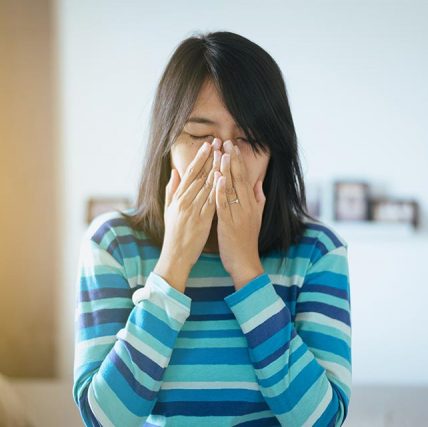What is Dry Eye Syndrome?
Dry eye syndrome (DES) is a chronic eye condition caused by the eyes not producing enough tears, or when the tears lack the right balance of water, oil, and mucus.
Our optometrists use their expertise to treat patients in and around Hammonton who want relief from the irritation and discomfort caused by DES.


What Causes Dry Eye?
Dry eye can stem from a variety of factors, such as genetics, environmental factors, and even prescription medications. Hormonal changes can also play a role in causing dry eye, with women who are pregnant, breastfeeding, taking oral contraceptives, or going through menopause being more susceptible to having dry eyes.
Research also shows that women over 50 are twice as likely to develop DES than their male counterparts.
Common Dry Eye Symptoms
Patients with DES often experience symptoms that cause chronic irritation and make everyday activities difficult.
Common signs of DES include:
- Blurriness
- Burning
- Dryness
- Feeling of foreign body in the eye
- Irritation
- Itchy eyes
- Pain
- Redness
- Stinging
- Watery eyes
People with dry eye often use artificial tears to manage their symptoms, but this is a temporary way of finding relief. Here are some of the dos and don’ts of alleviating DES symptoms.
First up — blinking. Blinking is essential for moisturizing the eyes and flushing out particles that can cause irritation. If you find yourself blinking less frequently, especially when using digital devices, this might be making your DES symptoms even worse.
Although it may feel like a quick fix, rubbing your eyes can actually intensify your symptoms and even introduce bacteria, resulting in an eye infection. It can also cause unsightly blood vessels to pop, making your eyes even redder.
Although artificial tears can alleviate soreness and itchiness, you shouldn’t overdo it. Some brands contain preservatives that aren’t great for long-term use, and even preservative-free options may not provide long-lasting relief. Buying them regularly can also get expensive and constantly applying them throughout the day can disrupt your routine.
In short — if you’re suffering from DES, talk to an eye care professional to figure out the best course of action.
Dry Eye Treatments
There are a few different treatments that eye care professionals recommend for dry eye.
A common method is using artificial tears or medicated/anti-inflammatory eye drops to help soothe and lubricate the eyes.
Punctal plugs are also an effective dry eye remedy. They’re tiny devices that are inserted into the tear ducts to block drainage and keep moisture in the eye. Punctal plugs are also cost effective and can be easily removed or replaced as needed, making them a better alternative to eye drops that need to be constantly applied.

Dry Eye Technology
If you’re one of the millions of people globally dealing with dry eye, you’ll be glad to know that the latest optical technology has made treatment easier and more effective than ever before.
This includes InflammaDry, LipiFlow, and TearLab — innovative tools that allow us to quickly and accurately assess your eye health and provide customized treatment plans for fast, long-lasting relief.
InflammaDry
Did you know that people with dry eye syndrome often have elevated levels of a natural protein enzyme called matrix metalloproteinase-9, or MMP-9, in their tears?The InflammaDry system helps measure levels of MMP-9 by analyzing a sample of tears taken from inside the lower eyelid. Best of all, the test is fast, easy, and painless, with results typically available in just 10 minutes.
It’s also a disposable test that can be performed right here in our office, making InflammaDry a top choice for both eye doctors and DES patients.
LipiFlow
Meibomian glands, located near the eyelashes, are responsible for secreting oils that lubricate the eyes and keep them moist.
When these glands become clogged, it can lead to dry eye syndrome. LipiFlow is an advanced technology that unblocks the meibomian glands by applying gentle heat and pressure to both the inside and outside of the eyelids. This removes blockages and stimulates the eye’s natural moisture, providing long-lasting relief for patients with dry eye.
This procedure is done in the office and only takes around 12 minutes to complete.
TearLab
TearLab is a highly efficient and advanced device used to diagnose dry eye. It measures concentration levels in human tears and operates as a 3-in-1 system — including a test card, test pen, and countertop unit.
It works by collecting a tiny sample of tear fluid in under 30 seconds using the single-use microchip test card, which is then placed inside the test pen for analysis. The data gets transmitted to the reader, which displays the results within seconds. With TearLab, diagnosing DES has never been easier or faster!





